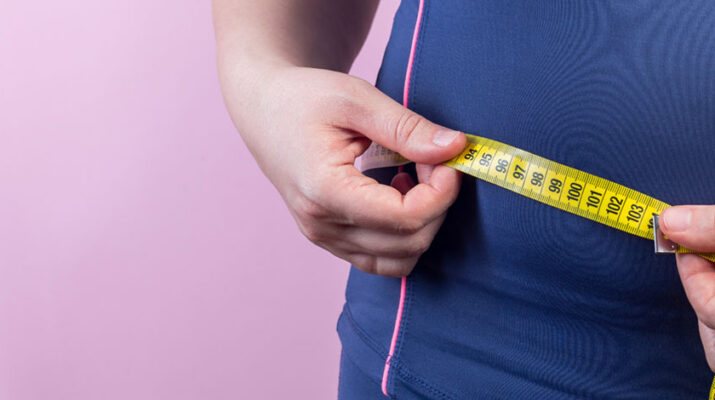Take your time; there’s no need to rush.
By Deborah Jeanne Sergeant
Nearly all women who birth a baby experience a saggy abdomen afterwards.
The miracle of childbearing leaves a not-so-awe-inspiring “pooch.” To an extent, the pooch is unavoidable, although it can be reduced.
At first, moms need to go easy on themselves.
“After I had my daughter, I’d take her in the carrier and at about six weeks postpartum, start working out,” said Vanessa Barnabei, MD, OB-GYN and professor of obstetrics at Jacobs School of Medicine and Biomedical Sciences at UB. “You can start walking almost right away. If you had a C-section, you may not tolerate exercise. By six weeks, most women should be able to do some modest exercise.”
She said that after each pregnancy, most women gain about five pounds and each baby, it gets harder to lose. While some women do shed it all, “no one should expect their body to look the same. There are so many changes of pregnancy,” she said.
She said that exercise such as yoga and Pilates may help tighten the core and the muscles supporting abdomen.
Rebecca Batt, certified as a holistic Matrona doula, operates Whole Love Doula, which serves the Buffalo and Rochester area. She encourages new moms to “take your time; there’s no need to rush. Everyone’s journey is definitely different.”
Even with a perfectly healthy, normal vaginal birth, most mothers are told by their healthcare providers to take it easy for the first six weeks post-partum. Any complication, repair, C-section or other issues may prolong that period of rest or place further restrictions on moms. However, most mothers can still walk once they feel up to it.
Batt likes the videos posted by Leslie Sansone on YouTube, which include walking and gentle upper body work and the Mama Stefit program.
“You work into it slowly,” Batt said. “You don’t want to start hardcore as that can cause injuries. Start slowly and work your way up.”
That is particularly true for moms who have not exercised much while pregnant or at all before. Walking while wearing the baby in a sling or wrap can soothe the baby, eliminate the need for childcare during exercise, and offer the benefit of extra weight to the workout.
“When washing dishes and doing laundry, do little side steps or leg lifts,” Batt said. “Incorporate dance into your day. It helps to release oxytocin, which is great for your body.”
She also encourages mothers to plan for placenta encapsulation, which “helps with weight loss as you’re balancing out our hormones and helping your body to heal faster and reducing inflammation. Placenta encapsulation is definitely something needed.”
Batt tells new moms to focus on consuming whole foods and keeping healthful foods available for snacks while nursing, along with drinking plenty of water. Focusing on good nutrition, rather than nutrient-void foods, will encourage both good health and weight loss.
In addition to nursing’s numerous benefits to the baby, it can also help moms reduce the pooch.
Jenni Kula, DONA and ProDoula-certified doula and owner of Mindful Mama Birthing, serves Buffalo and Rochester. She said that breastfeeding triggers hormones that promote the natural reduction of the uterus to a normal size as well. Pregnancy can grow the uterus to up to 500 times its normal size.
“In the postpartum time, the uterus goes through involution,” she said. “While breastfeeding, the hormones release. Oxytocin tells the uterus to go to its original size. It’s not complete until week six postpartum. Many people feel those contractions while nursing in the first week. For some mothers, they’re very noticeable. It’s telling your uterus to close down and the cramping as it returns to its size helps slow postpartum bleeding.”
Some women say that drinking a few cups of red raspberry leaf tea daily can support this process. However, any undue bleeding or other complications should be promptly reported to a healthcare provider.
Nursing is also a good way to burn calories.
“It takes 300 to 500 calories for breastfeeding per day,” Kula said. “During the postpartum time, your body is using those extra stores to produce breastmilk for the baby.”
Some women find they do not lose as much weight while breastfeeding because of stress, mitigating the loss through eating more or other causes.
It takes time to lose “baby weight” and regain some semblance of a pre-pregnancy body. However, if the pooch is painful, it could be diastasis recti, or separation of the abdominal muscles. Left untreated, mothers can experience poor posture, back pain, weak core muscles, constipation, bloating, shallow breathing, pain during intercourse and bladder, rectal, or uterine prolapse. While some cases of diastasis recti resolve on their own, others persist.
“Go see a professional, like a pelvic floor specialist to identify what the problem is and help you evaluate it, so you can get specific exercises and therapies tailored to what you need,” Kula said. “I highly recommend it.”
She added that many women have been erroneously told these issues are normal after childbearing and most women simply accept them as part of motherhood. A pelvic floor specialist can assign exercises to improve the condition and in the most severe cases, surgery can correct it.

